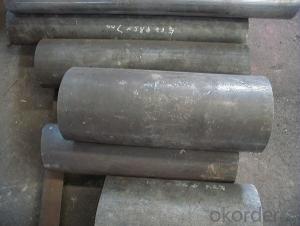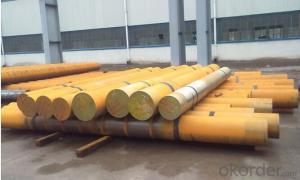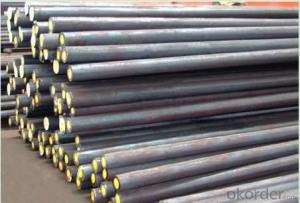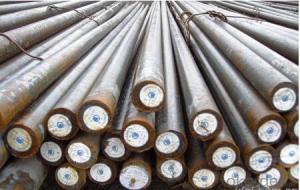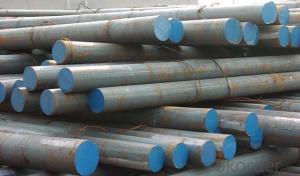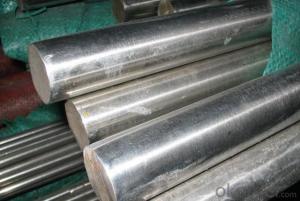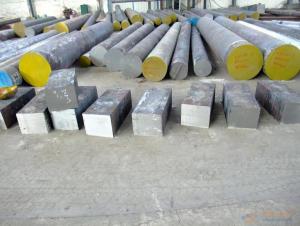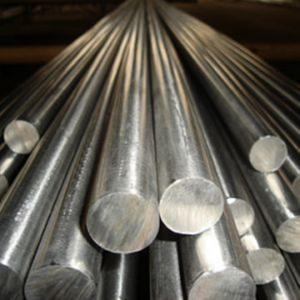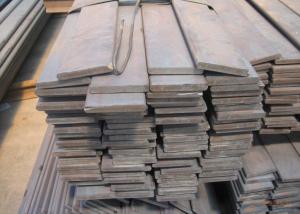Forged Steel Bar S136 / Die Steel S136 / Steel Round Bar S136
- Loading Port:
- China main port
- Payment Terms:
- TT OR LC
- Min Order Qty:
- 25 m.t.
- Supply Capability:
- 10000 m.t./month
OKorder Service Pledge
OKorder Financial Service
You Might Also Like
Item specifice
The details of our Steel
1. Produce Standard: as the GB, AISI, ASTM, SAE, EN, BS, DIN, JIS Industry Standard
2. Produce processes: Smelt Iron -EAF smelt Billet - ESR smelt Billet -Hot rolled or forged get the steel round bar and plate
3. Heat treatment:
Normalized / Annealed / Quenched+Tempered
4. Quality assurance:
All order we can received Third party inspection, You can let SGS, BV,.. and others test company test and inspect our products before Goods shipping.
Product information
Chemical Composition(%) of steel round bar S136 | C | Si | Mn | S | P | Cr | Mo |
0.34-0.42 | 0.60-1.30 | 0.20-0.70 | ≤0.030 | ≤0.030 | 13.00-14.50 | 0.15-0.40 | |
Specification of steel round bar S136 | Dia.mm*Lmm=100~600*6000 | ||||||
Application of steel round bar S136 | Used for various large-sized mirror plastic mould, precision plastic mould, like, cars accessories, home appliances, electronic equipment plastic mould. | ||||||
Characteristic of steel round bar S136 | 1)Pure and precision mirror polishing,good abrasion resistance | ||||||
Heat Treatment of steel round bar S136 | Normalized / Annealed / Quenched / tempered | ||||||
Product show

Workshop show
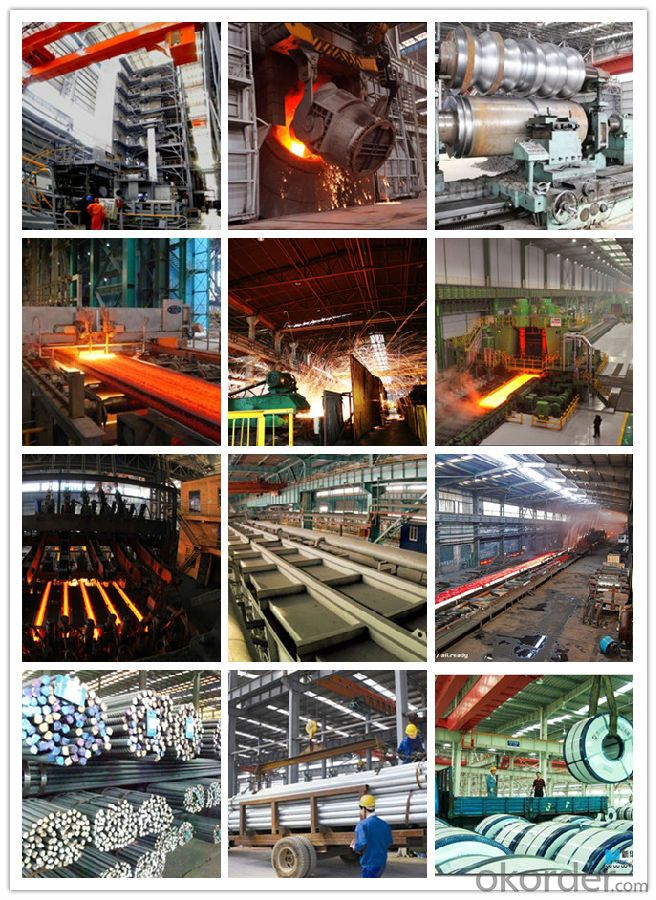
- Q:How does special steel perform in terms of fatigue resistance?
- Special steel has excellent fatigue resistance due to its unique composition and manufacturing process. It is specifically designed to withstand repeated loading and stress, making it highly resistant to fatigue failure. This property ensures that special steel can endure prolonged use and maintain its structural integrity, even under demanding conditions.
- Q:What are the main applications of special steel in the oil and gas equipment?
- Special steel is widely used in the oil and gas equipment industry due to its exceptional properties such as high strength, corrosion resistance, and heat resistance. It is primarily used in applications such as drilling rigs, pipelines, valves, pumps, and offshore platforms. Special steel ensures the durability and reliability of these equipment in harsh environments, thereby enhancing the overall efficiency and safety of oil and gas operations.
- Q:How does tungsten contribute to the properties of special steel?
- Tungsten contributes to the properties of special steel by improving its hardness, strength, and resistance to wear and corrosion. It also enhances the steel's ability to retain its shape and withstand high temperatures, making it suitable for various industrial applications such as cutting tools, electrical contacts, and parts for aerospace and automotive industries.
- Q:Can special steel be used for making power generation equipment?
- Yes, special steel can be used for making power generation equipment. Special steel is known for its high strength, durability, and resistance to corrosion, making it an ideal choice for manufacturing components such as turbines, generators, and boilers that are used in power generation processes.
- Q:What are the different non-metallic inclusions in special steel?
- The different non-metallic inclusions commonly found in special steel include oxides, sulfides, nitrides, and carbides. These inclusions can have various shapes and sizes, and their presence can significantly affect the mechanical properties and performance of the steel.
- Q:What are the specific requirements for special steel used in the oil and gas pipeline industry?
- The specific requirements for special steel used in the oil and gas pipeline industry are dictated by the harsh operating conditions and the need for high performance and reliability. Some of the key requirements include: 1. Corrosion resistance: Special steel used in the oil and gas pipeline industry must possess excellent resistance to corrosion, as pipelines are exposed to various corrosive elements such as moisture, gases, and chemicals. This helps to prevent the degradation or failure of the pipeline due to corrosion. 2. High strength: The steel used in pipelines must have high tensile strength to withstand the high pressure and stress that it experiences during transportation of oil and gas. This ensures the pipeline's structural integrity and prevents leaks or bursts. 3. Toughness and impact resistance: The steel must be able to absorb energy and resist fracture when subjected to sudden impact or external forces. This is crucial for maintaining pipeline integrity and preventing accidents or ruptures. 4. Low temperature toughness: As pipelines often operate in cold environments, the steel must exhibit excellent low-temperature toughness to prevent brittle fracture. This ensures that the pipeline remains ductile and resistant to failure even at extremely low temperatures. 5. Weldability: Special steel used in pipelines should be easily weldable to facilitate the construction and repair of pipelines. Good weldability ensures strong and reliable joints that can withstand the stress and pressure during operation. 6. Resistance to hydrogen-induced cracking: Steel used in the oil and gas pipeline industry should have high resistance to hydrogen-induced cracking (HIC) and sulfide stress cracking (SSC). These types of cracks can occur when hydrogen or sulfide ions penetrate the steel, leading to catastrophic failure. Resistance to these types of cracking is crucial for pipeline safety. 7. Compliance with industry standards: Special steel used in the oil and gas pipeline industry must meet specific industry standards and regulations. These standards ensure that the steel meets the required mechanical properties, chemical composition, and manufacturing processes necessary for safe and reliable pipeline operation. Overall, the specific requirements for special steel used in the oil and gas pipeline industry are aimed at ensuring corrosion resistance, high strength, toughness, low-temperature performance, weldability, resistance to cracking, and compliance with industry standards. These requirements are essential for maintaining the integrity and safety of oil and gas pipelines.
- Q:What are the requirements for special steel used in electronic components?
- The special steel used in electronic components must meet specific and strict requirements. To begin with, it needs to have excellent electrical conductivity in order to effectively transmit electrical signals within the components. This is crucial for the proper functioning and performance of electronic devices. Furthermore, the steel used in electronic components must possess high resistance to corrosion in order to protect the components from environmental factors such as moisture, humidity, and exposure to chemicals. Corrosion can cause the deterioration and failure of electronic components, so the steel must be able to withstand these potential hazards. Another important requirement is that the special steel should have low magnetic permeability. Magnetic interference can have a negative impact on the performance of electronic components, particularly in sensitive devices like microchips. Therefore, the steel used in electronic components should have minimal magnetic properties to avoid any interference with the operation of the components. Moreover, the steel must have good thermal conductivity to efficiently dissipate the heat generated within the electronic components. This is particularly crucial in devices that generate a significant amount of heat, as inadequate thermal conductivity can lead to overheating and potential damage to the components. Lastly, the special steel used in electronic components should have high strength and durability to ensure long-lasting and reliable performance. The components are often subjected to mechanical stress, vibrations, and other external forces, so the steel must have the necessary strength to withstand these conditions without deforming or failing. In conclusion, the requirements for special steel used in electronic components include excellent electrical conductivity, high corrosion resistance, low magnetic permeability, good thermal conductivity, and high strength and durability. Meeting these requirements is crucial for achieving optimal performance and durability of electronic devices.
- Q:What are the environmental impacts of producing special steel?
- The environmental impacts of producing special steel can include air pollution from emissions released during the steelmaking process, such as carbon dioxide, sulfur dioxide, and nitrogen oxide. Additionally, the extraction of raw materials for steel production, such as iron ore and coal, can result in deforestation, habitat destruction, and water pollution. The energy-intensive nature of steel production also contributes to greenhouse gas emissions and climate change. Proper waste management and implementation of sustainable practices can mitigate some of these environmental impacts.
- Q:What are the different galvanizing techniques used for special steel?
- There are several galvanizing techniques used for special steel, including hot-dip galvanizing, electro-galvanizing, and mechanical galvanizing. Hot-dip galvanizing involves immersing the steel in a bath of molten zinc, creating a thick, durable coating. Electro-galvanizing, on the other hand, uses an electrical current to deposit a thin layer of zinc onto the steel surface. Mechanical galvanizing involves tumbling the steel in a zinc powder and glass bead mixture, which adheres to the surface through friction. Each technique has its own advantages and is used depending on the specific requirements of the application.
- Q:How does special steel perform in cryogenic creep resistance?
- Special steels are known for their excellent cryogenic creep resistance. They exhibit minimal deformation and maintain their mechanical properties even at extremely low temperatures. This makes them highly suitable for applications in cryogenic environments where materials are subjected to significant stress over prolonged periods.
1. Manufacturer Overview |
|
|---|---|
| Location | |
| Year Established | |
| Annual Output Value | |
| Main Markets | |
| Company Certifications | |
2. Manufacturer Certificates |
|
|---|---|
| a) Certification Name | |
| Range | |
| Reference | |
| Validity Period | |
3. Manufacturer Capability |
|
|---|---|
| a)Trade Capacity | |
| Nearest Port | |
| Export Percentage | |
| No.of Employees in Trade Department | |
| Language Spoken: | |
| b)Factory Information | |
| Factory Size: | |
| No. of Production Lines | |
| Contract Manufacturing | |
| Product Price Range | |
Send your message to us
Forged Steel Bar S136 / Die Steel S136 / Steel Round Bar S136
- Loading Port:
- China main port
- Payment Terms:
- TT OR LC
- Min Order Qty:
- 25 m.t.
- Supply Capability:
- 10000 m.t./month
OKorder Service Pledge
OKorder Financial Service
Similar products
New products
Hot products
Hot Searches
Related keywords
